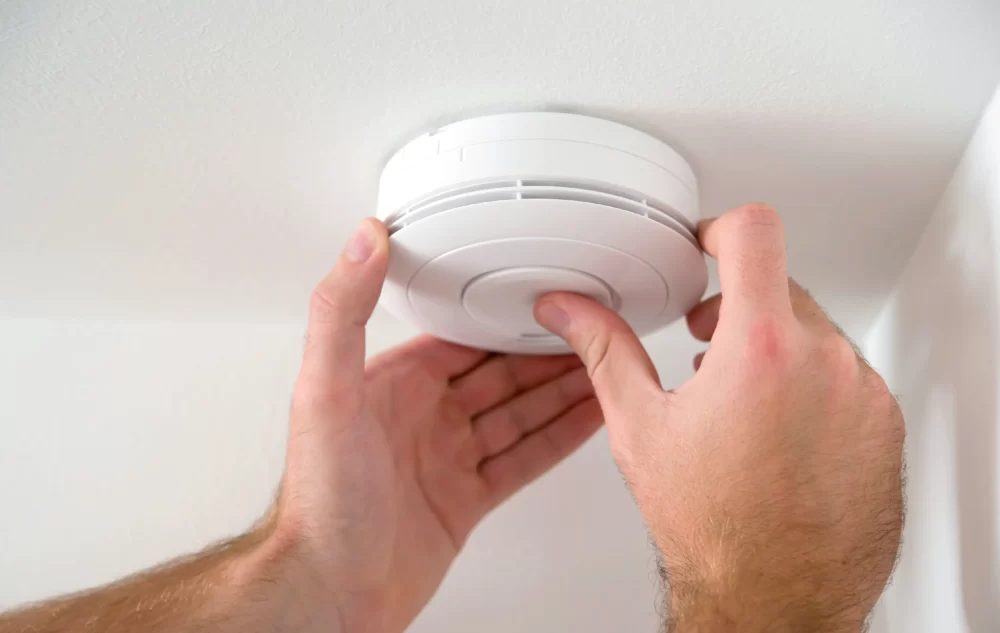Information
Interlinked Fire Alarm Kits VS. Standalone Alarms: Which Is Right For You?

Table of Contents
Introduction
When it comes to fire safety, having a reliable alarm system is crucial. Two common options available in the market are interlinked fire alarm kits and standalone alarms. Both offer different features and benefits, making it important to understand which option is right for you. In this article, we will compare interlinked fire alarm kits and standalone alarms, discussing their differences, advantages, and factors to consider when choosing the right system for your needs.
Overview Of Interlinked Fire Alarm Kits
Interlinked fire alarm kits are comprehensive systems that consist of multiple interconnected alarms. These alarms are wired or wirelessly connected to each other, allowing them to communicate and trigger simultaneously when one alarm detects smoke or fire. This ensures that all occupants in the building are alerted promptly, regardless of their location. It’s mandatory in Scotland and some other countries for every home. So, It’s important to choose the best Scottish fire alarm kit for their home safety. It should be followed by other countries.
Advantages Of Interlinked Fire Alarm Kits
- Enhanced Safety: Interlinked fire alarm kits provide a higher level of safety as they quickly notify all occupants in the event of a fire. This reduces the risk of delayed response or missed alerts.
- Comprehensive Coverage: With interconnected alarms placed strategically throughout the building, interlinked fire alarm kits provide comprehensive coverage, ensuring that no area is left unprotected.
- Early Detection: By detecting smoke or fire in one area, interlinked alarms can trigger alarms in other areas, providing early detection and potentially preventing the spread of fire.
- Integration with Other Systems: Interlinked fire alarm kits can be integrated with other fire safety systems, such as sprinklers or emergency lighting, creating a cohesive and effective fire safety solution.
Factors To Consider When Choosing Interlinked Fire Alarm Kits
Before deciding on an interlinked fire alarm kit, consider the following factors:
- Building Size and Layout: The size and layout of your building will determine the number of interconnected alarms required for effective coverage.
- Wiring Requirements: Interlinked fire alarm kits can be wired or wireless. Consider the wiring requirements and compatibility with your building’s infrastructure.
- Maintenance and Testing: Ensure that the interlinked fire alarm kit is easy to maintain and test regularly to ensure proper functionality.
- Alarm Features: Look for additional features such as battery backup, alarm volume control, and monitoring options when selecting an interlinked fire alarm kit.
Overview Of Standalone Alarms
Standalone alarms, on the other hand, are individual alarm units that operate independently. Each alarm unit is self-contained and does not communicate with other alarms in the building.
Advantages Of Standalone Alarms
- Simplicity: Standalone alarms are easy to install and require minimal wiring or configuration.
- Cost-Effective: Standalone alarms are generally more affordable compared to interlinked fire alarm kits, making them a budget-friendly option.
- Flexibility: Standalone alarms can be installed in various locations without the need for complex wiring or connectivity.
- Suitable for Small Spaces: Standalone alarms are ideal for small spaces or buildings where comprehensive coverage is not necessary.
Factors To Consider When Choosing Standalone Alarms
Consider the following factors when deciding on standalone alarms:
- Building Size and Layout: If you have a large building or complex layout, standalone alarms may not provide sufficient coverage. Evaluate the number of alarms required for adequate protection.
- Scalability: Determine whether the standalone alarm system can be expanded or integrated with other fire safety systems in the future.
- Maintenance and Testing: Ensure that standalone alarms are easy to maintain and test regularly for optimal performance.
- Alarm Features: Look for features such as battery backup, alarm sensitivity adjustment, and compatibility with other fire safety devices.
Comparison Between Interlinked Fire Alarm Kits and Standalone Alarms
| Features | Interlinked Fire Alarm Kits | Standalone Alarms |
| Coverage | Comprehensive | Limited |
| Communication | Interconnected | Independent |
| Early Detection | Yes | No |
| Integration with Other Systems | Yes | Limited |
| Installation Complexity | Moderate to High | Low |
| Cost | Higher | Lower |
Conclusion
Choosing between interlinked fire alarm kits and standalone alarms depends on various factors such as building size, layout, and budget. Interlinked fire alarm kits offer comprehensive coverage, early detection, and integration capabilities, making them suitable for larger buildings with complex layouts. Standalone alarms are simpler, cost-effective, and ideal for smaller spaces. Evaluate your specific requirements and consult with fire safety professionals to determine the right alarm system for your needs. Remember, prioritizing fire safety is essential for the protection of lives and property.
To know more about keep reading Lemony Blog.

-

 Business3 years ago
Business3 years agoHow to Do Long-Distance Moves with Children
-

 Travel2 years ago
Travel2 years agoQuick Guide: Moving To Santa Rosa?
-

 Real Estate3 years ago
Real Estate3 years agoWhy Dubai Festival City is a Great Neighbourhood for Young Learners
-

 Business3 years ago
Business3 years agoIs Guest Posting a Good Inbound Marketing Strategy?
-

 Business1 year ago
Business1 year agoThe Ultimate Guide To Thriving In Your Printing Franchise
-

 Business1 year ago
Business1 year agoExploring The Benefits And Challenges Of Restaurant Franchising
-

 Tech3 years ago
Tech3 years agoCyber Table That Will Change Your Life
-

 Lifestyle1 year ago
Lifestyle1 year agoDallas’ Hidden Gems: 6 Must-Try Restaurants Off The Beaten Path!









Recent Comments